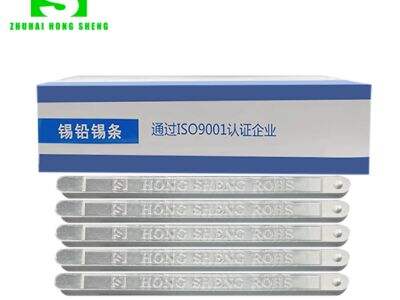Store bought solder bars come in various types. Different solder bars have certain characteristics that impact their performance. For instance, certain solder bars contain a combination of metals such as tin and lead, whereas others are lead-free, utilizing metals such as tin, silver, and copper. And understanding the differences can help you choose the most suitable solder bar for your project.
Prevention With the Right Solder Bar for Solid Bonds
When you select a solder bar for your projects, the type of metal that you are working with as well as the end result you want from your soldering process should be the factors you consider. For example, if you are handling very small, or delicate electronic components, you may prefer to use a lead-free bar solder. That's actually a safer option since you'll be free from exposure to lead through that line.
The Role of Flux in Soldering
Now, besides to focus on the metal base in the solder bar, there’s another element that you should look, which is the flux. Flux is a chemical solution that plays a vital role in soldering. It also cleans the metal surfaces that you will be soldering, so that the solder can flow smoothly.
The amount of flux varies between solder bars. The best amount of flux You make a difference on your own soldering joints Strongly determine how stably they adhere to one another. If the flux is too much, the solder will not stick well and the joints will be weak. On the other hand, if there is too little flux, your soldering joints may be weak and break easily.
A Common Failure Mode of Solder Joints
Because of this, in order to help ensure you get great soldering joints each time, selecting the correct solder bar composition for each project you move into, is critical. When you know how various soldering equipment for electronics compositions function and can choose the one that ideal fulfills your objective, you can get soldering joints that are solid, dependable, and durable.
What is Alloy in Solder Bars?
Alloy composition is another crucial element to consider when selecting a solder bar. Combination of two or more metals form a new type of metal with better properties, making it ideal for soldering. Various alloys can give various advantages in soldering.
One of the simplest ways to improve solder performance is with the alloy you are using; a higher silver content in the alloy can help improve the flow of electricity through the soldering joint. Conversely, more copper may up the strength and durability. Solder bars come in a variety of compositions, and understanding how different alloys affect their joints will give you the tools to choose the bar that best suits your solder requirements.
 EN
EN
 AR
AR
 FR
FR
 DE
DE
 RU
RU
 VI
VI
 TH
TH
 TR
TR
 MS
MS
 BE
BE


